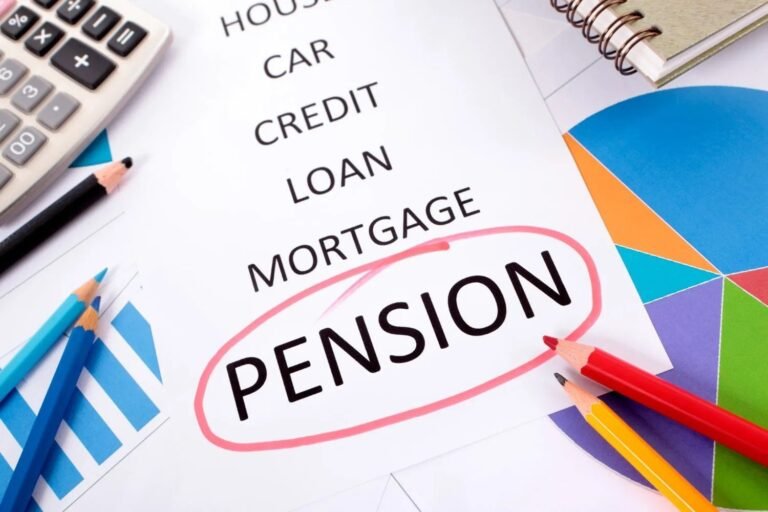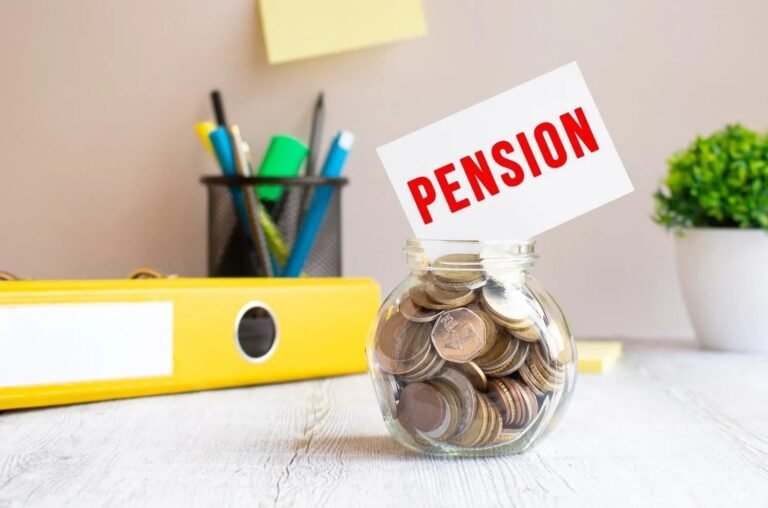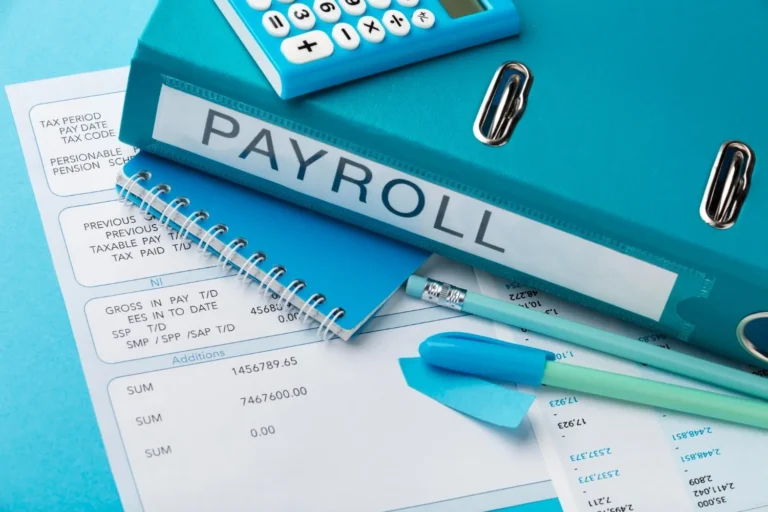If you live and work in the UK and are looking for a pension plan where you can have more control and manage things yourself, the SSAS Pension scheme could be just what you need. In this article, we will provide you with all the information you need to know about the SSAS pension scheme.
What is an SSAS Pension Scheme?
Small Self-Administered Scheme (SSAS) Pension scheme is established separately by the employers from the standard workplace pension scheme.
It offers businesses increased investment flexibility. Typically initiated by directors of small or family-run businesses, SSAS pensions aim to provide retirement benefits for owners, directors, senior staff, and sometimes specific family members, regardless of their role in the company.
The term “small” in SSAS reflects its limitation to eleven members, making it more prevalent in family businesses and startups. Like a Self-Invested Personal Pension (SIPP), SSAS allows trustees to determine how and where funds are invested for future growth.
Typically, the SSAS is established to offer retirement benefits to business owners, directors, senior staff, and, in certain instances, specific family members, irrespective of their employment status within the company.
What is a Unique Feature of SSAS?
One standout characteristic of SSAS, distinguishing it from other pension schemes like SIPPs, is its unique feature allowing a secured lending facility to the scheme’s main employer or other participating employers.
Additionally, it can purchase commercial Property, such as the trading premises of the principal employer, and then lease it back under commercial terms. This flexibility provides unique financial options for businesses involved in the SSAS.
Is an SSAS a Registered Pension Scheme?
An SSAS is a pension scheme officially registered with HMRC, and it enjoys the same tax advantages as other registered pension schemes. This means that personal contributions to the SSAS qualify for tax relief. Additionally, if an individual passes away before turning seventy-five, SSAS can be inherited tax-free by a nominated beneficiary.
How Does an SSAS Pension Schemes Work?
An SSAS pension scheme operates similarly to most defined contribution workplace pensions, but there are notable distinctions.
In an SSAS, members are designated as trustees, giving them control and flexibility over the scheme’s assets and investment choices.
When all members function as trustees, an SSAS benefits from exemptions in pension legislation, allowing a wider range of investments and fewer administrative requirements compared to other pension schemes.
The ability to place assets in trust within an SSAS, ensuring benefits can be passed on to surviving family members, makes these schemes popular among smaller family-run businesses.
Directors also have the option to utilise an SSAS to secure funding by lending to the company or purchasing its shares. Meeting specific criteria enables a small, self-administered scheme to borrow funds for business investment, known as an SSAS loan back—a distinctive way to inject cash into a business.
Get to know more on Pension Compliance
The value of a member’s retirement entitlement from an SSAS depends on:
- The contributions made on their behalf
- The duration of each investment
- Investment growth, and
- Any applicable charges.
Upon retirement, members can typically take up to 25% of their pot as a tax-free lump sum, with the remainder used to generate income.
Individual members receive tax relief on their contributions, while employer contributions may be deductible against profits, subject to certain conditions.
Advantages of SSAS Pension Scheme
The SSAS Pension scheme offers significant advantages. Members can enjoy tax relief on any contributions made to the SSAS pension. For basic rate taxpayers, there is a 25% tax top-up, with HMRC adding £25 for every £100 contributed to the pension.
Higher-rate taxpayers can reclaim additional tax relief through their tax Self-Assessment Tax Return. Additionally, contributions made by the employer into the scheme also qualify for tax relief, aiding in the reduction of the total tax liability for the employer.
Let us look at the advantages of SSAS Pension Scheme in detail:
Regulate
As a member of an SSAS, you have the responsibility of overseeing and managing your own pension. This grants you control over your investment decisions.
Invest in Your Own Company
An SSAS provides directors the opportunity to invest in their own company, allowing directors to hold up to 5% of their business shares.
Furthermore, businesses can secure a loan from their SSAS pension to finance their operations, with a minimum prescribed interest rate set at 1% above the average base lending rates of six prominent high street banks. This approach minimises dependence on traditional banks and their associated fees.
Offer Loans to Your Own Company
An SSAS allows you to offer commercial loans to your own company. As long it is for investment purposes, you could use your pension scheme to help your business expand. For example, with a loan for a new building.
Multi-Generational Benefits
SSAS pensions are sometimes called ‘family pensions’ because they welcome non-employee family members. The SSAS can also safeguard assets and continue providing benefits to families even after the initial members have passed away. Importantly, SSAS Pension scheme is protected from claims by both company and personal creditors.
Exemption from Employer National Insurance Contributions
Employer pension contributions are exempt from employer National Insurance Contributions (NICs), which are typically at a rate of 13.8%. This means that your business does not have to pay the 13.8% NICs on the pension contributions it makes on your behalf.
Utilising a Property SSAS to Purchase Business Premises

Getting your business premises with a Property SSAS is a smart move that many people find helpful. It means the property belongs to your pension.
If you sell it later, your Property SSAS, being a pension, usually does not have to pay capital gains tax on the profit. Even though the SSAS technically owns the premises, in a Property SSAS, you still have a lot of control over it.
It is a simple and effective way to manage your business property while enjoying the benefits of your pension.
Additionally, when your company pays rent for the premises, it is treated as a business expense, bringing tax benefits for your company.
The payments made to the SSAS come with these tax advantages, and the rent received by the scheme is not subject to income tax. All these factors work together to potentially grow your pension fund.
For example,
If your company pays rent to the Property SSAS for the business premises, this rent is subtracted from your company’s taxable profits, lowering its overall tax responsibility. At the same time, the rent received by the SSAS stays untaxed, supporting the growth of your pension fund.
How Does Tax Relief Work in The SSAS Pension Scheme?
The tax relief on SSAS pensions operates similarly to other defined contribution (DC) pension schemes.
A minimum of 20% tax relief is applied to personal pension contributions. This means that every £80 you pay is topped up to £100. Higher and additional rate taxpayers can additionally claim 40% or 45% tax relief through their self-assessment tax return.
Each member of an SSAS pension has an annual allowance equivalent to 100% of their salary, capped at a maximum of £60,000. This means the annual pension contributions can be up to 100% of their salary or the annual allowance limit, whichever is lower.
Suppose you are a director of a company. In that case, you and your business can benefit from employer contributions to your pension.
The standard rate of corporation tax in the UK is 25%. However, for companies with profits under £50,000, the applicable rate maybe 19%. If your business contributes £1,000 to your pension, it could save £250 (25%) or £190 (19%) on its corporation tax bill.
Disadvantages of an SSAS Pension
The SSAS pension, while advantageous in many ways, comes with certain limitations and potential drawbacks that individuals should be aware of:
Small Membership Restriction
A notable limitation of an SSAS pension is its restriction on membership. It allows a maximum of eleven members to join the scheme. This limitation may be a consideration for businesses or groups with larger numbers of potential participants.
Legal Responsibilities and Liabilities
Unlike traditional pension schemes with external providers, an SSAS relies on its members to act as trustees. While this provides control, it also means that members carry the legal responsibilities and liabilities of managing the pension. This includes ensuring compliance with pension laws and regulations.
Administrative Duties
The trustees of an SSAS have additional administrative responsibilities, including reporting to HMRC and collecting tax relief. This hands-on approach requires a thorough understanding of pension regulations.
While the trustees can manage these tasks, it may also involve complexities that necessitate professional assistance. Engaging with an accountant can be particularly helpful in navigating these administrative duties.
Get to know more on Pay As You Earn (PAYE)
What Type of Property Can You Invest in Using a Property SSAS?
According to HMRC rules, an SSAS is restricted from investing in or holding commercial property. However, various alternatives are available for individuals interested in investing in residential property using their SSAS.
Commercial Property
AN SSAS has the capability to directly invest in commercial property. Commercial property options encompass a broad range, including land for development, high street premises, factories, car parks, hotels or pubs, care homes, designated student Halls of Residence, and many other possibilities.

Buying development land with a Property SSAS
An amazing advantage of having a Property SSAS pension is that allows you the ability to buy, own, and develop land or commercial property. This comes with some significant tax benefits, such as:
Tax Relief on Contributions
Any money you contribute to the Property SSAS for buying land or property is eligible for tax relief.
Capital Gains Tax Exemption
If the value of the property increases over time within the SSAS, you will not have to pay Capital Gains Tax when you sell it.
Additionally, a Property SSAS can buy land for residential development and develop it right up to the point where it can be lived. However, before it becomes habitable, the land must be sold at market value. This sale can be to yourself, your company, or a third party before the completion of the development.
A common strategy at this stage is to utilise the SSAS loan back facility. This allows you to loan of up to 50% of the total funds in your Property SSAS to help complete the development. This approach ensures that you can use your pension funds effectively to support the growth and completion of your property projects.
Let us learn more about the above strategy below:
Residential Property
According to HMRC rules, a Property SSAS is restricted to investing solely in Commercial property. In simpler terms, any property deemed fit for habitation falls under residential property, and therefore, an SSAS is not allowed to hold or invest in such properties.

However, an SSAS can purchase or hold land or property for development purposes if it is sold to the company or a third party before becoming habitable. Various strategies are available to indirectly invest in residential property using your Property SSAS funds. Examples include:
- Providing loans to third-party property developers
- Utilising the SSAS loan back facility to lend funds to your company for residential property investment, and
- the acquisition of your business premises for tax efficiency and growth.
Let us explore these examples:
Example 1: Commercial Property with Residential Planning Permission
Suppose your SSAS owns a commercial property that has recently acquired residential planning permission. In this situation, the SSAS can proceed with converting the property into residential dwellings.
However, it must sell the properties off-plan (before completion) to third parties. This includes selling a property either to yourself personally or to a company you own.
Example 2: Commercial Property Converted into Flats
Your SSAS owns a commercial property, and you have obtained planning permission to convert it into a block of flats.
Option for Over-55s: Tax-Free Lump Sum
Since you are over fifty-five, you have the option to draw a tax-free lump sum from your pension, which can be up to 25% of the total fund value.
Strategic Move: Transferring Property Ownership
Instead of taking cash, you decide to transfer ownership of the commercial property from your SSAS to your private ownership.
Further Step: Transferring to Your Company
Following this, you transfer the property from your personal ownership to your company through a director’s loan. This involves using a loan from your SSAS to fund the residential development of your commercial property.
In summary, example two outlines a strategic approach where, as someone over 55, you leverage the option of a tax-free lump sum from your SSAS to facilitate the conversion of a commercial property into flats.
The process involves transferring ownership from your SSAS to your private ownership and subsequently to your company through a director’s loan, allowing your SSAS to support the residential development of the property.
Where Can an SSAS Borrow From?
Trustees may choose to loan money from an individual, a company or a financial institution such as a bank. If the loan is secured from a connected individual, then it must be assured that the loan is made on a commercial basis.
Who is Responsible for Regulating SSAS Pension Scheme?
An SSAS pension is self-regulated. However, this self-regulation does not exempt participants from certain legal obligations. The rules governing SSAS are complex; violating them can result in severe penalties.
One crucial obligation is the appointment of a scheme administrator for the SSAS. The scheme administrator, who can be any member of the SSAS fund, is responsible for various tasks, including:
- Registering with The Pensions Regulator and submitting regular scheme returns.
- Registering the pension scheme with HMRC.
- Reporting events related to the scheme to HMRC.
- Providing information to scheme members about the lifetime allowance, benefits, and transfers.
- Paying certain tax charges.
Although any member of the SSAS fund can serve as the scheme administrator, there is no requirement for the administrator to be a member. Many SSAS schemes choose to designate a ‘professional trustee’ for this role, a practice that can save time and simplify administrative procedures.
How to Setup an SSAS Pension?
If you are already thinking about setting up an SSAS pension, here are eight key considerations to ensure your scheme is established efficiently, straightforwardly, and most importantly, in compliance with the law.

Step 1: Decide Who Will be Included in the SSAS
Small Self-Administered Scheme (SSAS) is limited to a maximum of Eleven members. Typically, these members are directors or senior staff from your company. However, members also have the option to include family members in the SSAS. Hence, the first step is to determine who will be part of the SSAS.
Step 2: Decide a Name
To set up your SSAS Pension requires an official name. Example, Prosperity Nexus Pension Plan, Infinite Ventures Pension Fund, Stellar Legacy Pension Plan.
Step 3: Choose Someone to be the Scheme Administrator
If you are not using a professional SSAS provider to manage your scheme, you will have to designate one of your members as the scheme administrator. Their role will include administrative tasks like meeting HMRC requirements and keeping fellow trustees updated on the SSAS’s performance.
Step 4: Collect all the Necessary Paperwork
To establish your SSAS pension scheme, it is essential to gather legal details pertaining to the sponsoring employer, along with each scheme member’s personal information and signatures.
Step 5: Remember to Comply With Anti-Money Laundering Legislation.
It is a legal requirement to adhere to anti-money laundering legislation. Each SSAS member must undergo identity verification.
Step 6: Create a New Bank Account.
You should have at least one specified bank account for the SSAS. However, if desired, you can set up multiple bank accounts for various purposes, such as receiving contributions and managing investment income.
Step 7: Complete the Registration of Your SSAS with HMRC.
You need to register your SSAS with HMRC before you can begin getting contributions from your members. Once registered, HMRC will provide you with a Pension Scheme Tax Reference (PSTR) number. This unique code confirms that your SSAS Pension scheme is officially registered for tax relief and exemptions.
Step 8: Registration Process With The Pensions Regulator.
Now, you must register with The Pensions Regulator, the UK authority overseeing work-based pensions. Their role is to ensure that everything is in compliance with regulations for your pension.
In simple terms, the above steps highlight the importance of careful planning, following the rules, and taking a proactive approach to make sure the pension scheme is successful and follows the law. By considering these things, you can set up a strong SSAS pension that meets the rules and financial goals.
Frequently Asked Questions
Who Can Be A Trust Member?
To become a trust member of an SSAS, you must be at least 18 years old. There is no upper age limit for joining an SSAS.
How Do You Draw Benefits From An SSAS?
SSAS member trustees can begin drawing benefits from their scheme at age 55, 25% of which will be tax-free, with the balancing 75% subject to income tax.
In particular conditions such as serious ill health, a recognised qualifying occupation or a protected pension age, members may be able to draw benefits earlier.
Difference Between SSAS Vs SIPP
|
SSAS |
SIPP |
|---|---|
|
SSAS is designed for senior executives and their families, limiting membership to eleven individuals. |
SIPP is open to anyone, making it accessible to more individuals. |
|
SSAS provides the widest investment flexibility, offering more choices for investment strategies. |
While still flexible, SIPP has some limitations on investments compared to SSAS. |
|
SSAS allows lending to the sponsoring business, enabling financial support for the company. |
SIPP does not have the capability to lend to the sponsoring business. |
|
In SSAS, members serve as trustees, collectively controlling the scheme. |
In SIPP, the SIPP provider acts as the trustee, managing the pension on behalf of the individual. |
| SSAS members jointly control the scheme, and there are no individual pension pots; instead, members hold a percentage share of the overall fund. | In SIPP, individuals have control over their pension, and each person’s pension fund is distinct, belonging entirely to the individual. |
Which Is Better For Me, SSAS Pension Or SIPP?
When it comes to choosing between SSAS and SIPP, it depends on the members and their level of involvement in managing the scheme. Your personal preferences and goals are crucial in making this decision. Both types of pensions need to follow HMRC rules to avoid tax charges, and they provide similar benefits and tax relief as traditional pensions. Let us look at some of the scenarios where:
An SSAS might be suitable if you:
- Have individual or combined pension funds exceeding £125,000.
- Consider combining your pension wealth with your spouse, business partner, or family members.
- Wish to lend money from your pension back to your limited company.
- Prefer a more entrepreneurial approach to managing your pension.
- Consider the purchase of commercial property within your pension.
- Seek personalised pension advice tailored to your needs.
- Are open to accepting a potentially higher level of charges, as SSAS is typically more expensive than a standard pension.
- Desire greater flexibility and control over your pension investments.
- Wish for flexibility in drawing benefits during retirement.
- Possess alternative income sources available at retirement.
A SIPP might be suitable for you if:
- Your pension fund exceeds £75,000.
- You are looking for personalised financial advice tailored to your circumstances.
- You are willing to incur a higher level of charges, as SIPPs are generally more expensive than standard pensions.
- You seek greater control over your pension investments in the stock market.
- You desire flexibility in drawing benefits during your retirement.
- Alternative sources of income are available to you at retirement.
Can I Transfer My Pension Into An SSAS?
Yes, it is possible to transfer your pension from your current provider into an SSAS. However, before proceeding with the transfer, it is advisable to check for any exit fees associated with your current pension provider.
It is important to note that some types of ‘unfunded’ public sector defined benefit pensions may not be transferable. Examples of unfunded schemes include pensions for teachers, civil servants, NHS employees, and emergency services personnel.
What Happens To My SSAS When I Die?
If you have an SSAS (Small Self-Administered Scheme) and you pass away, what happens to it is like what happens with any other type of pension that you leave behind.
If you pass away before the age of seventy-five, your nominated beneficiary can inherit your pension tax-free. However, if your demise occurs after the age of seventy-five, your beneficiary inherits your pension at their applicable rate of income tax.
Is It Possible For An SSAS To Take Out A Loan?
Yes, indeed! An SSAS can borrow money, but the borrowed funds must be used for the benefit of the SSAS. This usually involves activities like buying commercial property, providing loans to the main employer, or making other investments.
What Is The Borrowing Limit For An SSAS?
Trustees of an SSAS Pension Scheme have the authority to borrow, with the borrowing limit set at a maximum of 50% of the net asset value of the SSAS. The net asset value is determined by subtracting any existing borrowing from the total asset value.
For example,
Let us consider a scenario where the SSAS holds assets with a total value of £800,000, and there is already an outstanding loan of £50,000. In this case, any additional borrowing would be restricted to £350,000. As a result, the cumulative borrowing would reach £400,000, representing 50% of the total assets held by the SSAS. It is important to note that trustees can leverage not only the scheme’s assets but also any loans for the purpose of asset purchase. This provides trustees with the flexibility to access funds equivalent to 150% of the scheme’s overall value. Trustees can utilise a combination of the scheme’s assets and permissible loans to enhance their financial capacity.
It is important to note that trustees can leverage not only the scheme’s assets but also any loans for the purpose of asset purchase. This provides trustees with the flexibility to access funds equivalent to 150% of the scheme’s overall value. Trustees can utilise a combination of the scheme’s assets and permissible loans to enhance their financial capacity.
Our PRR Calculator helps you to crunch the numbers and solves your payable queries.









